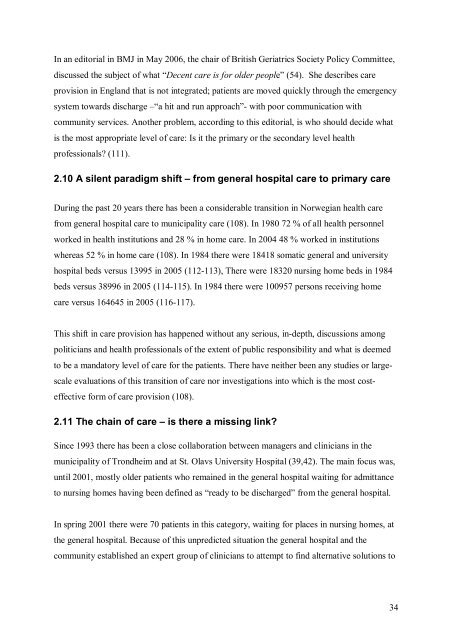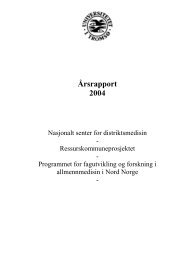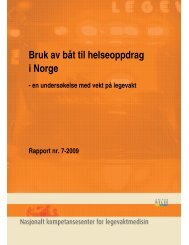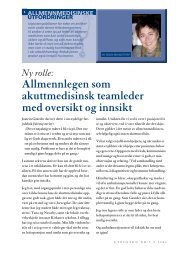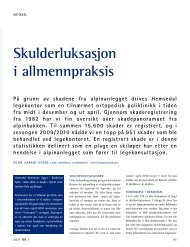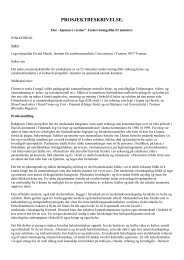Helge Garåsen The Trondheim Model - NSDM
Helge Garåsen The Trondheim Model - NSDM
Helge Garåsen The Trondheim Model - NSDM
You also want an ePaper? Increase the reach of your titles
YUMPU automatically turns print PDFs into web optimized ePapers that Google loves.
In an editorial in BMJ in May 2006, the chair of British Geriatrics Society Policy Committee,<br />
discussed the subject of what “Decent care is for older people” (54). She describes care<br />
provision in England that is not integrated; patients are moved quickly through the emergency<br />
system towards discharge –“a hit and run approach”- with poor communication with<br />
community services. Another problem, according to this editorial, is who should decide what<br />
is the most appropriate level of care: Is it the primary or the secondary level health<br />
professionals? (111).<br />
2.10 A silent paradigm shift – from general hospital care to primary care<br />
During the past 20 years there has been a considerable transition in Norwegian health care<br />
from general hospital care to municipality care (108). In 1980 72 % of all health personnel<br />
worked in health institutions and 28 % in home care. In 2004 48 % worked in institutions<br />
whereas 52 % in home care (108). In 1984 there were 18418 somatic general and university<br />
hospital beds versus 13995 in 2005 (112-113), <strong>The</strong>re were 18320 nursing home beds in 1984<br />
beds versus 38996 in 2005 (114-115). In 1984 there were 100957 persons receiving home<br />
care versus 164645 in 2005 (116-117).<br />
This shift in care provision has happened without any serious, in-depth, discussions among<br />
politicians and health professionals of the extent of public responsibility and what is deemed<br />
to be a mandatory level of care for the patients. <strong>The</strong>re have neither been any studies or largescale<br />
evaluations of this transition of care nor investigations into which is the most costeffective<br />
form of care provision (108).<br />
2.11 <strong>The</strong> chain of care – is there a missing link?<br />
Since 1993 there has been a close collaboration between managers and clinicians in the<br />
municipality of <strong>Trondheim</strong> and at St. Olavs University Hospital (39,42). <strong>The</strong> main focus was,<br />
until 2001, mostly older patients who remained in the general hospital waiting for admittance<br />
to nursing homes having been defined as “ready to be discharged” from the general hospital.<br />
In spring 2001 there were 70 patients in this category, waiting for places in nursing homes, at<br />
the general hospital. Because of this unpredicted situation the general hospital and the<br />
community established an expert group of clinicians to attempt to find alternative solutions to<br />
34


